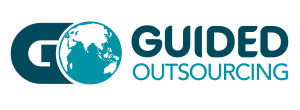
Architecture, Engineering, and Construction (AEC) firms face growing demands for efficiency, speed, and precision. From infrastructure development to large-scale urban planning, projects are becoming more complex while deadlines grow tighter. To keep up, many firms turn to outsourcing AEC services. Whether it’s CAD drafting, BIM modeling, structural engineering, or administrative functions, outsourcing gives companies access to specialized skills, reduces costs, and improves turnaround time without compromising quality.
Outsourcing not only helps companies achieve operational efficiency but also creates opportunities to compete on a global scale while maintaining focus on core design and engineering excellence.
Why Companies Are Outsourcing AEC Services
Outsourcing means delegating certain business tasks or processes to a third-party provider. This provider can be local or international, but the most common form is offshore outsourcing, where services are delivered from countries with skilled labor and lower operational costs.
In simple terms, outsourcing is hiring someone outside your company to do something you could do internally, but smarter, faster, or more cost-effectively. For example, instead of hiring a full-time accountant, a small business might outsource bookkeeping to a specialized team. Instead of building an entire IT department, a company might tap into a remote team that offers 24/7 support.
Access Specialized Expertise
Outsourcing connects firms with professionals who have advanced skills in CAD, BIM, structural analysis, or MEP design. These services require years of training and specialized software proficiency. Instead of spending heavily to maintain these in-house capabilities, outsourcing gives firms access to top-tier experts who are already trained and certified.
Scale Operations Quickly
Workloads in AEC fluctuate significantly based on project pipelines, bid wins, and seasonal cycles. Outsourcing allows firms to scale resources up or down quickly without committing to long-term employment contracts. This adaptability prevents delays when projects surge and avoids financial strain during slow periods.
Reduce Costs
Maintaining full-time design teams, investing in expensive licenses for CAD or BIM software, and covering overhead costs can significantly strain budgets. Outsourcing eliminates many of these expenses, with firms often saving 40–60% on project costs while still achieving high-quality outcomes.
Focus on Core Business Functions
AEC companies thrive on creativity, innovation, and strong client relationships. By outsourcing technical and repetitive tasks such as CAD drafting or quantity take-offs, firms can direct more time and energy to client-facing work, design strategy, and business development, ultimately strengthening their competitive position.
AEC projects are high stakes. Delays, budget overruns, and quality issues can severely impact business. Outsourcing helps firms avoid these pitfalls by leveraging global talent pools.
Common Denominators of Companies Using AEC Outsourcing
Outsourcing is widely used across different segments of the AEC industry, not only by small firms but also by global giants. Large-scale companies depend on outsourcing to manage their workload efficiently, particularly when dealing with complex or international projects.
Examples include AECOM, one of the largest infrastructure firms worldwide, leverages outsourcing to improve efficiency on large projects, Jacobs Engineering, collaborating with outsourcing partners to balance operations, and HDR, engaging with outsourcing firms to enhance its creative workflows and manage rising demands.
The common denominators among outsourcing firms are clear:
- High project volume that requires scalable resources to avoid delays.
- A global presence that makes it necessary to maintain consistency across multiple time zones.
- Budget-conscious strategies where cost efficiency is key to sustaining profitability.
- Commitment to digital transformation and the integration of modern tools like BIM to stay competitive in the market.
In-Demand AEC Services
AEC firms outsource a wide range of services to stay competitive and meet tight project schedules. According to reports, the global outsourcing industry is valued at over $90 billion annually, with engineering and IT services playing a major role. In AEC specifically, the most outsourced services include:
CAD Drafting & Detailing
CAD outsourcing remains in high demand due to its time-consuming and repetitive nature. Drafting professionals ensure precise 2D and 3D drawings that comply with standards, helping firms speed up design documentation without overloading in-house teams.
BIM Modeling & Coordination
BIM is critical for collaborative design and construction. Outsourcing BIM tasks provides access to experts who can build comprehensive models, detect conflicts, and streamline coordination among stakeholders, ensuring fewer delays and cost overruns.
Structural Analysis & Design
Structural engineering services require advanced calculations and safety checks. Outsourcing allows companies to work with engineers who specialize in analyzing load capacities, seismic requirements, and building code compliance.
3D Visualization & Rendering
To win client approvals and bids, firms increasingly rely on lifelike visualizations. Outsourced rendering services produce photorealistic images, walkthroughs, and flythroughs that enhance client presentations and marketing.
MEP (Mechanical, Electrical, Plumbing) Design
MEP systems are highly specialized and complex. Outsourcing these ensures accurate, efficient, and standards-compliant designs while reducing the need for expensive in-house experts.
Quantity Take-Offs & Cost Estimation
Reliable cost estimation is critical for successful bids and financial planning. Outsourcing to specialists ensures accurate quantity take-offs and cost analysis, reducing financial risks.
The demand for outsourcing these services is expected to grow as AEC firms prioritize efficiency and digital-first operations.
Key Considerations Before Outsourcing AEC Services
Before making the decision, companies should carefully weigh these factors:
Project Complexity
Not all projects are equally suited for outsourcing. Firms should evaluate which components are best delegated externally without risking overall design integrity.
Data Security
AEC projects often involve sensitive design files and intellectual property. It’s crucial to confirm that the outsourcing partner adheres to strict data protection measures and complies with relevant legal frameworks.
Communication
Miscommunication can derail timelines. Choosing a partner with strong English proficiency and reliable communication channels reduces delays and ensures smooth coordination.
Vendor Experience
Evaluate the outsourcing partner’s expertise, certifications, and track record.
Balancing Cost vs. Value
Cheapest isn’t always best. Quality and reliability should take priority, and you should evaluate the long-term value provided by the outsourcing partner.
Challenges and Risks of Outsourcing AEC Services
While outsourcing offers many advantages, it also comes with challenges:
- Data Confidentiality Risks: Sharing design and project files increases exposure to potential leaks or misuse. Firms need to ensure strict NDAs and security protocols are in place.
- Quality Concerns: Not all outsourcing partners operate at the same quality standards. Without clear guidelines, the risk of errors and rework increases.
- Coordination Issues: Remote teams may face difficulties aligning with in-house processes.
- Hidden Costs: While outsourcing is cost-effective, poor planning or unclear contracts may lead to additional expenses in the form of rework or missed deadlines.
To mitigate these, firms should establish strong contracts, clear workflows, and regular quality checks.
Why the Philippines Leads in AEC Outsourcing
The Philippines has emerged as a leading destination for AEC outsourcing. Here’s why:
- Skilled Workforce: Thousands of Filipino architects, engineers, and CAD specialists graduate annually.
- Cultural Compatibility: Strong English proficiency and Westernized business culture make communication seamless.
- Cost Advantage: Firms save significantly while maintaining high-quality output.
- Proven Industry Hub: The Philippines already dominates outsourcing in IT, customer support, and accounting. AEC is a natural extension.

Hire AEC Professionals in the Philippines through Guided Outsourcing
Guided Outsourcing provides tailored AEC outsourcing solutions designed for businesses seeking flexibility, accuracy, and cost savings. With access to top-tier Filipino architects, engineers, and CAD specialists, companies can confidently scale their operations. We ensure quality-driven services that align with international standards.
When you partner with Guided Outsourcing, you gain:
- A dedicated team aligned with your workflow.
- Access to professionals with both technical expertise and cultural compatibility.
- Flexible pricing structures suited to project demands.
- Long-term scalability without long-term commitments.
Conclusion
For AEC firms, outsourcing is now a core part of business strategy, not just an alternative. It helps reduce costs and boost efficiency, enabling firms to manage increasing demand and deliver quality projects faster. Success hinges on finding the right partner, managing risks, and communicating effectively. The Philippines stands out as a top location for these services, offering a highly skilled workforce and strong support systems.
Guided Outsourcing is ready to help you find the right professionals to ensure your projects are completed precisely, quickly, and with great value. Contact us now to get started.

